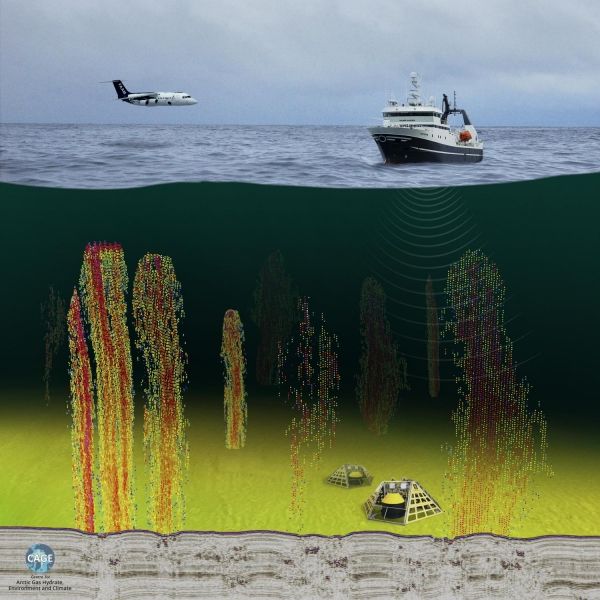The atmospheric concentration of methane, a potent greenhouse gas, has almost tripled since the beginning of industrialisation. Methane emissions from natural sources are poorly understood. This is especially the case for emissions from the Arctic Ocean.
The Arctic Ocean is a harsh working environment. That is why many of the scientific expeditions are conducted in the summer and early autumn months, when the weather and the waters are more predictable. Most extrapolations regarding the amount of methane discharge from the ocean floor, are thus based on observations made in the warmer months.
“This means that the present climate gas calculations are disregarding the possible seasonal temperature variations. We have found that seasonal differences in bottom water temperatures in the Arctic Ocean vary from 1,7°C in May to 3,5°C in August. The methane seeps in colder conditions decrease emissions by 43 percent in May compared to August.” says oceanographer Benedicte Ferré, researcher at CAGE Centre for Arctic Gas Hydrate, Environment and Climate at UiT The Arctic University of Norway. The study is published in Nature Geoscience.
Read more at Cage - Center for Arctic Gas Hydrate, Climate and Environment
Image: Ocean floor observatories, research ship and airplane were deployed to a area of 250 active methane gas flares in the Arctic Ocean. Credit: Torger Grytå/CAGE


